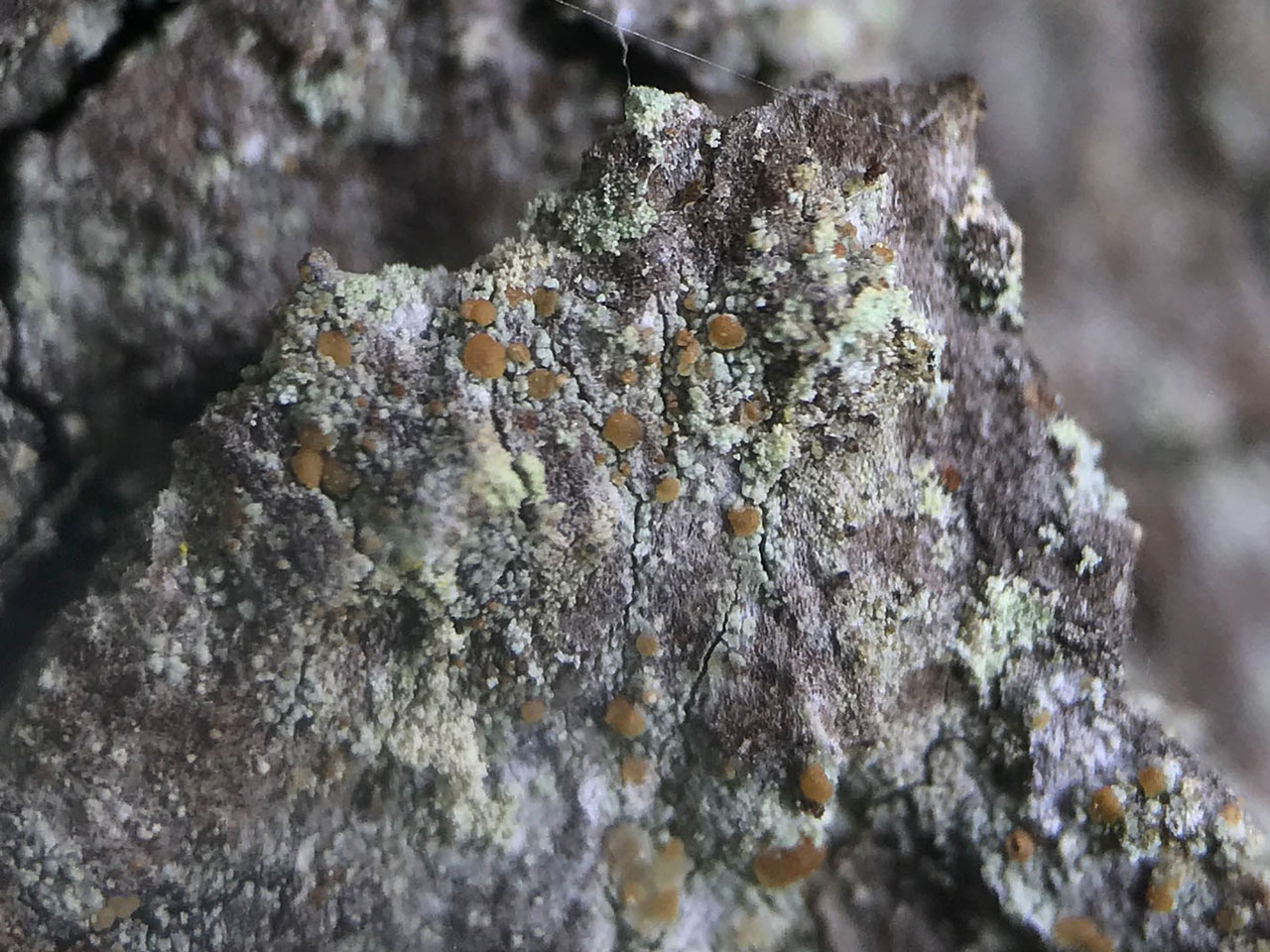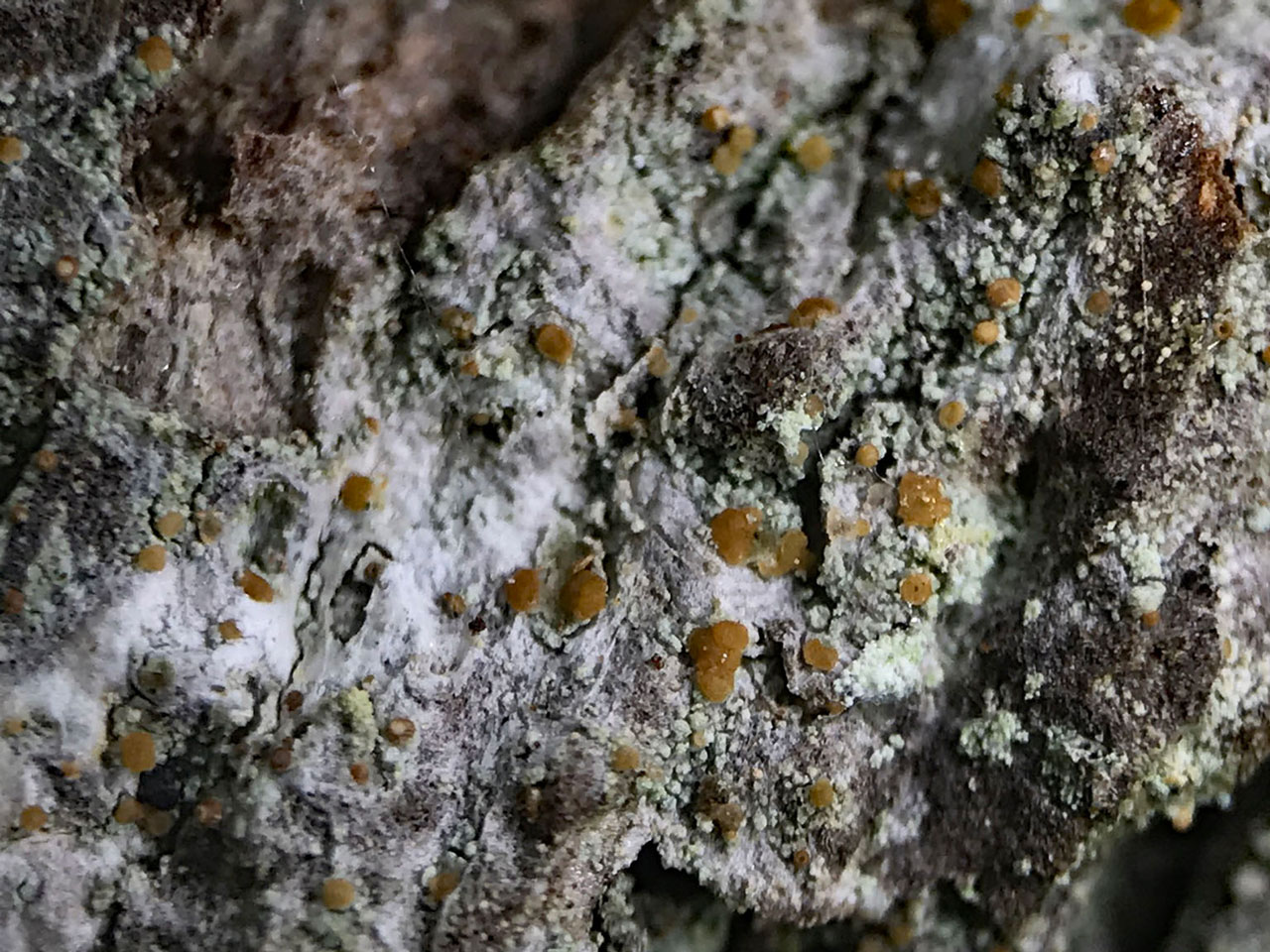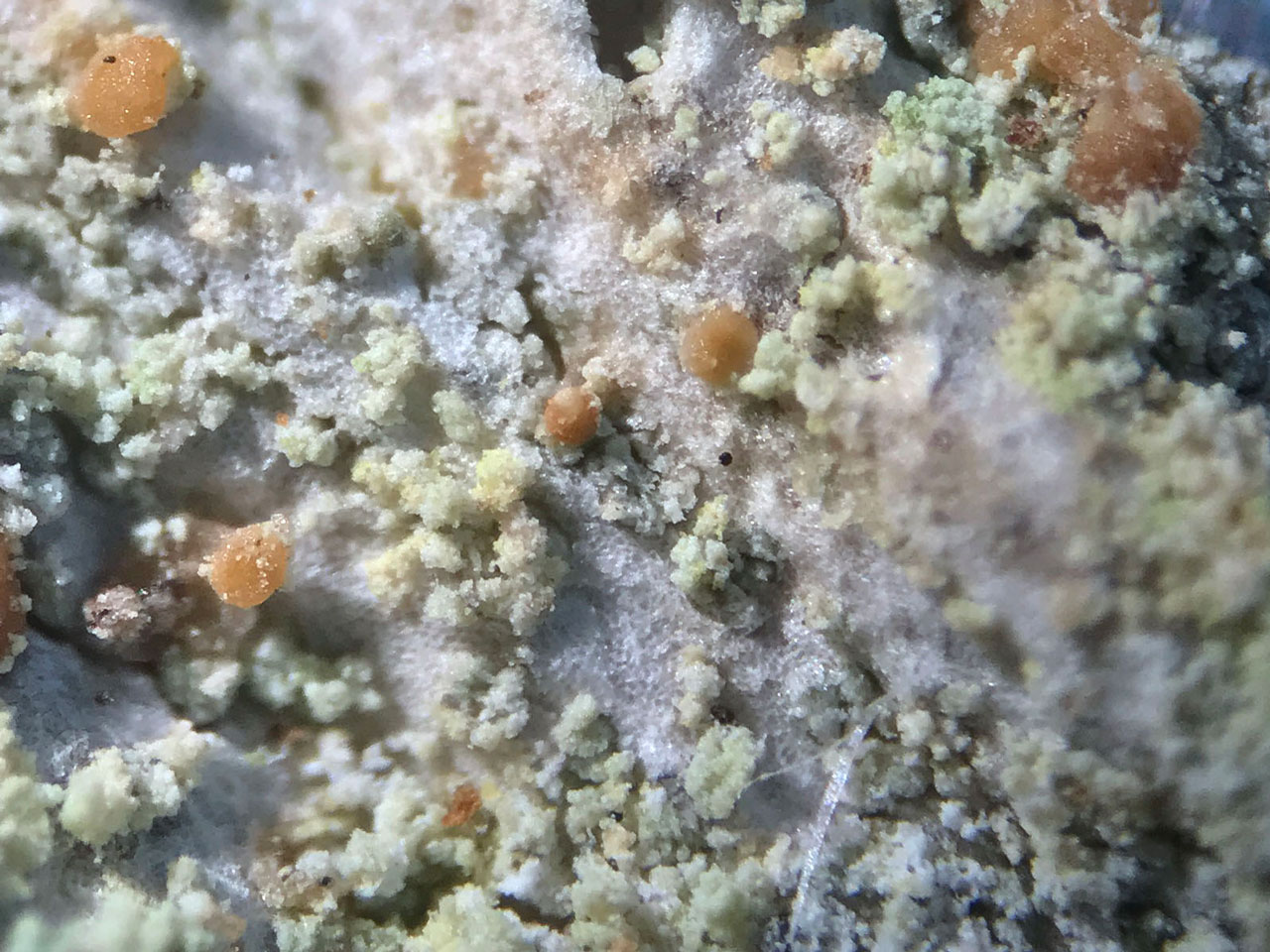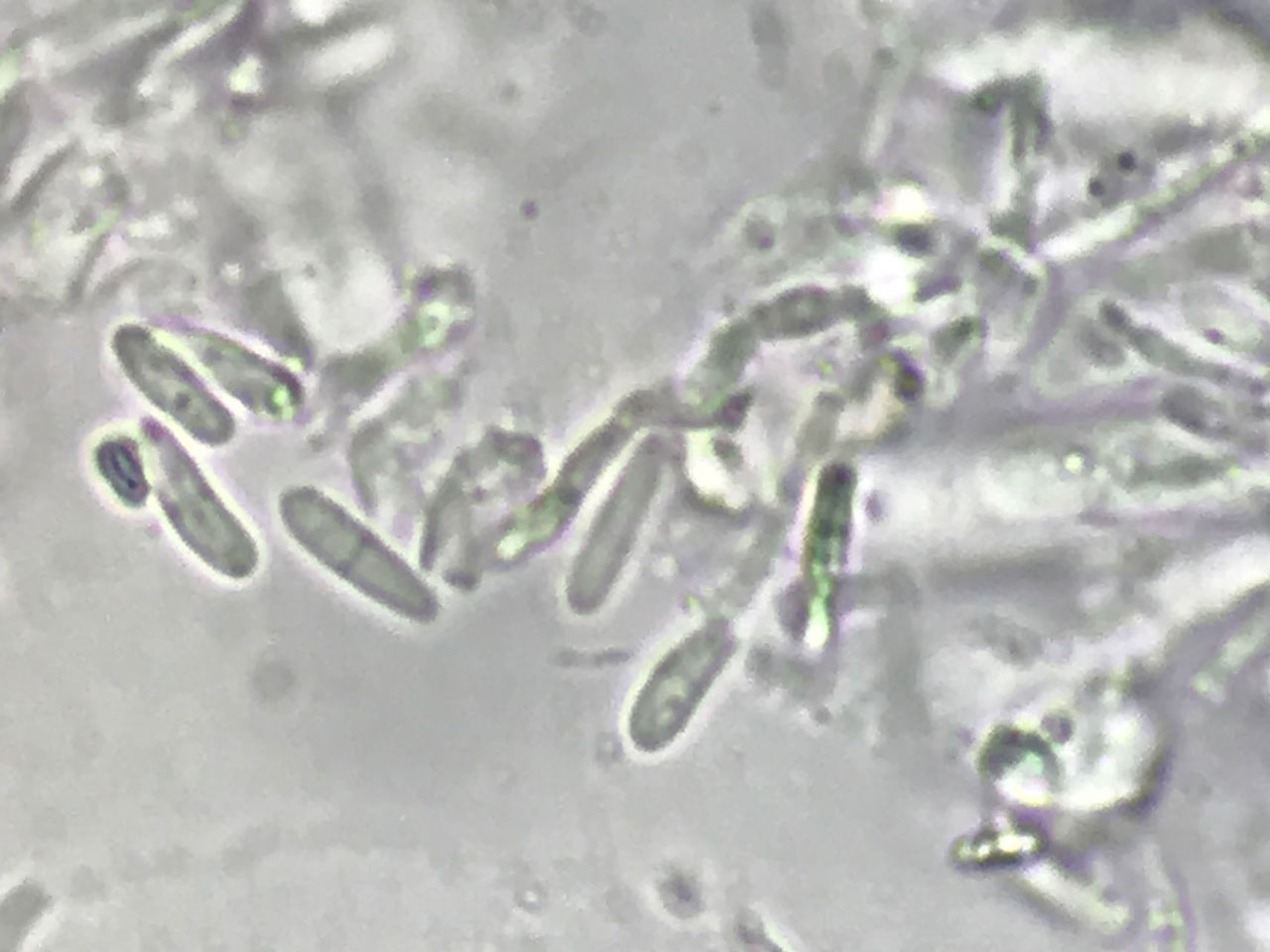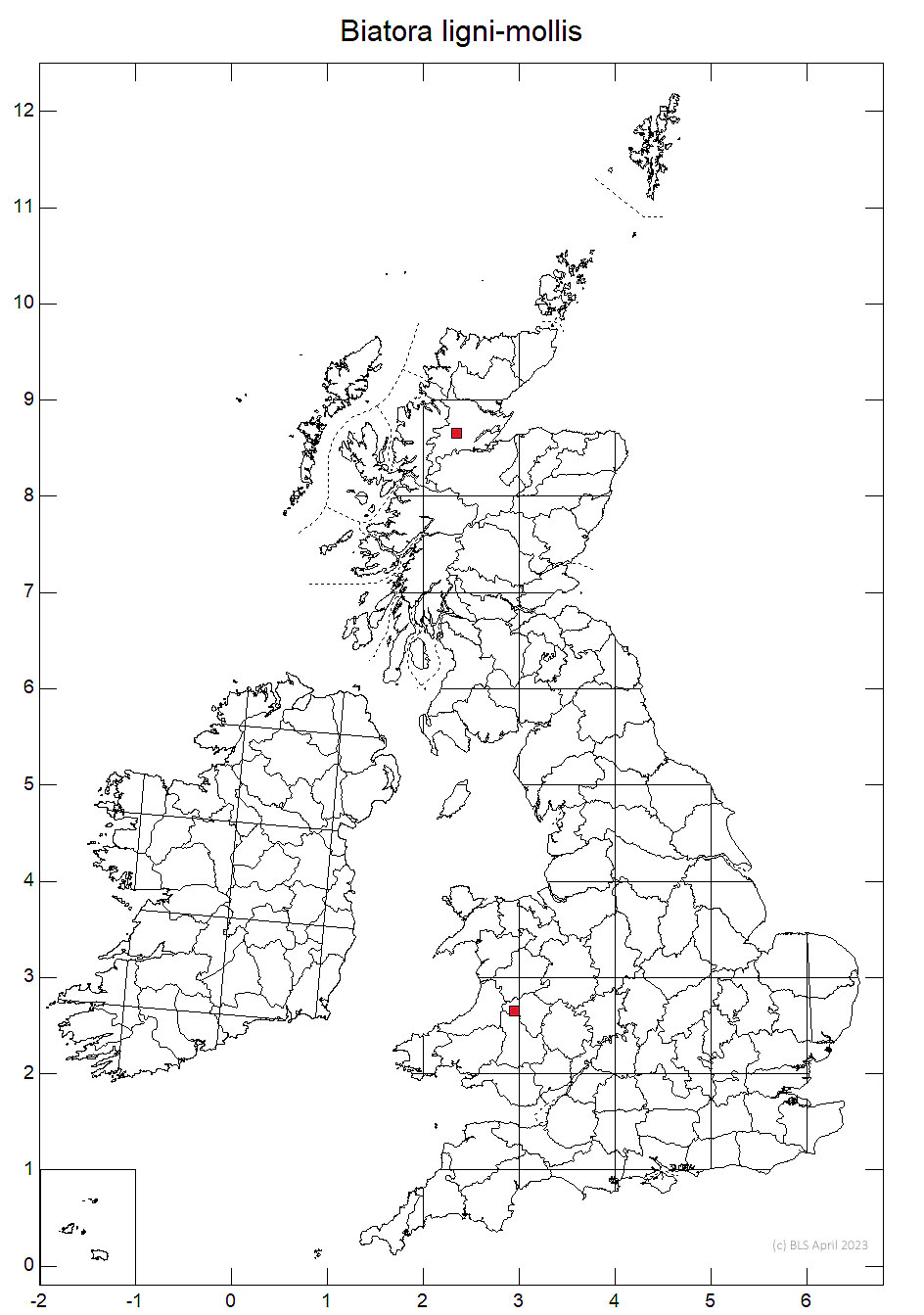An attractive and distinctive but very rare Biatora, with orange apothecia and similarly coloured sessile globose pycnidia set on a white, partly granulose thallus, which is bright UV+ white. Found on dry bark on ancient Oaks in less oceanic upland pasture woodlands. Known from only two woods in 2023, one in Scotland and one in Wales.
Thallus thin, continuous, whitish to pale green, distinctly granulose or farinose, partly immersed, prothallus absent. Photobiont chlorococcoid, algal cells 8–14 μm diam. Apothecia usually present, scattered over the thallus or in groups, sometimes contiguous but not agglomerated, 0.15–0.40 μm diam., with a slightly constricted base; disc dark orange to pale reddish brown, flat and becoming slightly convex in old apothecia; margin distinct in young and mature apothecia but hardly present in old ones, slightly paler and sometimes slightly sinuose; exciple colourless, 40–45 μm thick; hypothecium colourless; hymenium colourless, 40–60 μm high, sometimes with vertical rows of tiny colourless crystals especially in the upper parts; paraphyses rather few, usually shorter than the asci, unbranched, not swollen at the apices, ca 1 μm diam.; asci 25–35 × 7–10 μm, clavate or sometimes slightly turbinate. Ascospores 8–12 × 2.0–3.5 μm, narrowly ellipsoidal with rather rounded ends, straight or slightly curved, thin-walled, 1–2 (–3) septate. Pycnidia always present, sessile, conspicuous but quite small (ca 0.1 mm diam.), globose, usually with a wide open ostiole, of the same colour as the apothecia but paler and thus pale orange to brownish; conidia of two types, not produced in the same pycnidia: (a) bacilliform, 3.5–5.5 × 0.8–1.5 μm; (b) ovoid with a slightly pointed end, 2.5–3.0 × ca 2 mm. Thallus C–, K–, KC–, Pd–, UV+ brilliant white (lobaric acid (major) and roccellic acid (major)).
Similar to Biatora veteranorum, but with darker and more frequently developed apothecia and sessile pycnidia that are not pruinose; the combination of orange apothecia and pycnidia and the UV+ brilliant white thallus is very distinctive.
Rare on dry bark on veteran Oaks in upland pasture woodlands in less oceanic climates

Known from a single large Oak trunk in Easter Ross and on three veteran Oaks in Mid Wales (Elan Valley). Should be looked out for in other sub-oceanic woods.
An internationally rare lichen of dry bark and soft lignum, also found on conifers abroad but not found on pines, and confined to old growth woods. Very rare in Britain and known only from four veteran Oaks in two locations.
Britain: Vulnerable
Wales: not assessed
Cannon, P., Ekman, S., Kistenich, S., LaGreca, S., Printzen, C., Timdal, E., Aptroot, A., Coppins, B., Fletcher, A., Sanderson, N. & Simkin, J. (2021). Lecanorales: Ramalinaceae, including the genera Bacidia, Bacidina, Bellicidia, Biatora, Bibbya, Bilimbia, Cliostomum, Kiliasia, Lecania, Megalaria, Mycobilimbia, Phyllopsora, Ramalina, Scutula, Thalloidima, Toninia, Toniniopsis and Tylothallia. Revisions of British and Irish Lichens 11: 1-82. Link
Text by Neil A Sanderson based on Cannon et al (2021)
